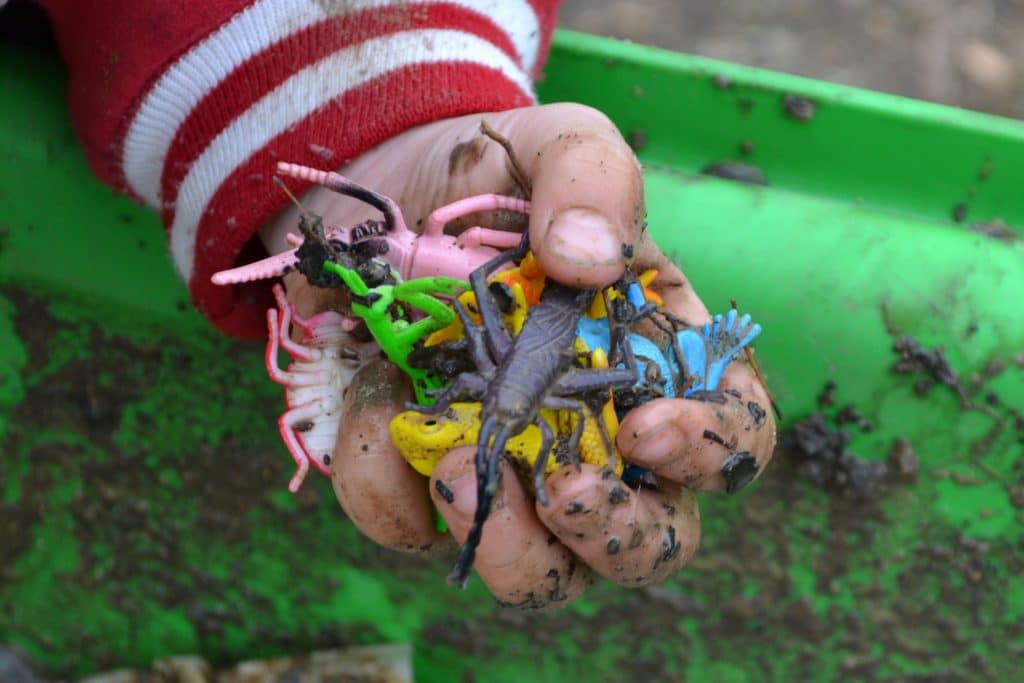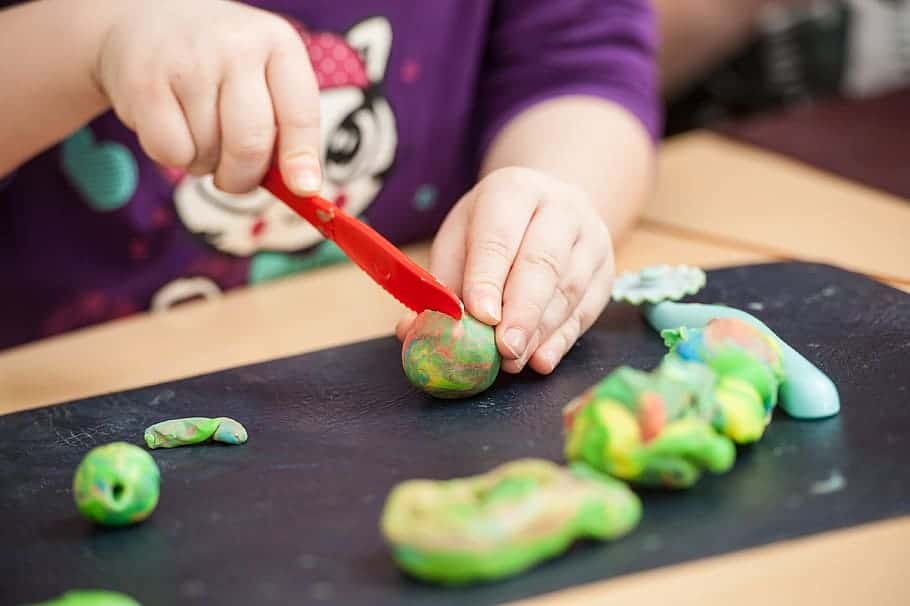Fossils are the preserved remains, or traces of remains, of ancient organisms. There are many types of fossils and many different ways that fossils form. Most fossils are not the actual body parts of the original organisms. Rather they are altered remains, impressions, molds, and casts of parts of the organisms.
Fossil impressions are prints, or indented marks, of plants or animals from long ago. The plant or animal lands in mud, silt, or sand and leaves an imprint in the soft earth. Over time, the plant or animal disappears, but the impression remains. When the imprint hardens, it forms a mold. Later, mud or other materials can fill the mold to make a cast—a copy of the original. Some examples of impressions are trace fossils such as footprints, trails, burrows, or other traces of an animal rather than of the animal itself.
In the following activity, you will create your own impression molds to see how fossil impressions are formed and discover what they can tell us about the organisms that leave them behind.
Materials for Outdoor Version
Materials for Indoor Version
Directions for Outdoor Version

- Line the bottom of your edged container with about a ½” layer of soil.
- Mix in water until moist, but not muddy. If you overwater, simply add more soil until you get a thicker consistency.
- Walk your plastic toy through the soil mixture, making footprints as you go.
- Gather leaves, plants, and flowers from the backyard and see how each one creates a different impression.
- Smooth out the mixture to try more variations!
Directions for Indoor Version

1. Make a salt dough – Add about half of your salt to your flour and mix. Then, slowly add water and start mixing the ingredients. Add more water and salt until you get your desired consistency. The dough should be firm and not too sticky.
2. Take some of the dough and roll it into a ball, then squish the ball into a disc or pancake shape on a piece of wax paper.
3. Place your dinosaur’s feet in flour so they won’t stick, then walk the dinosaur through the dough disc, making footprints as it goes.
4. If you want to preserve your fossils, let your dough dry for a few days or bake it in the oven at 350 degrees for about 20 minutes on a baking sheet or parchment paper (do not bake the wax paper!).
